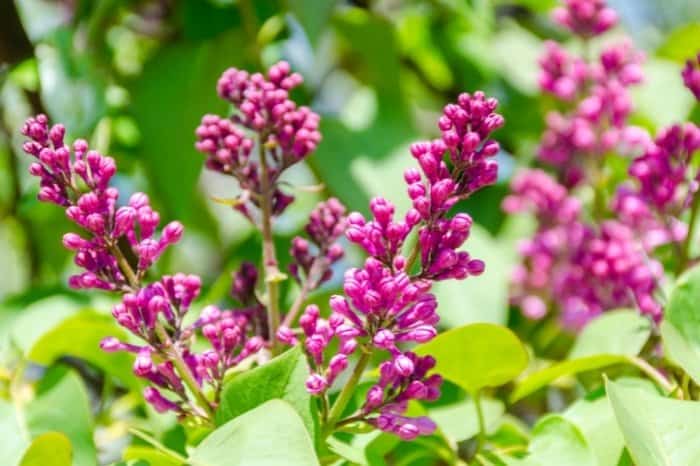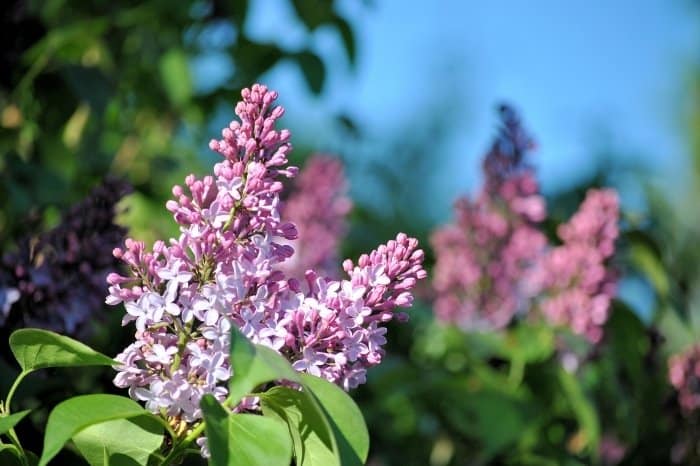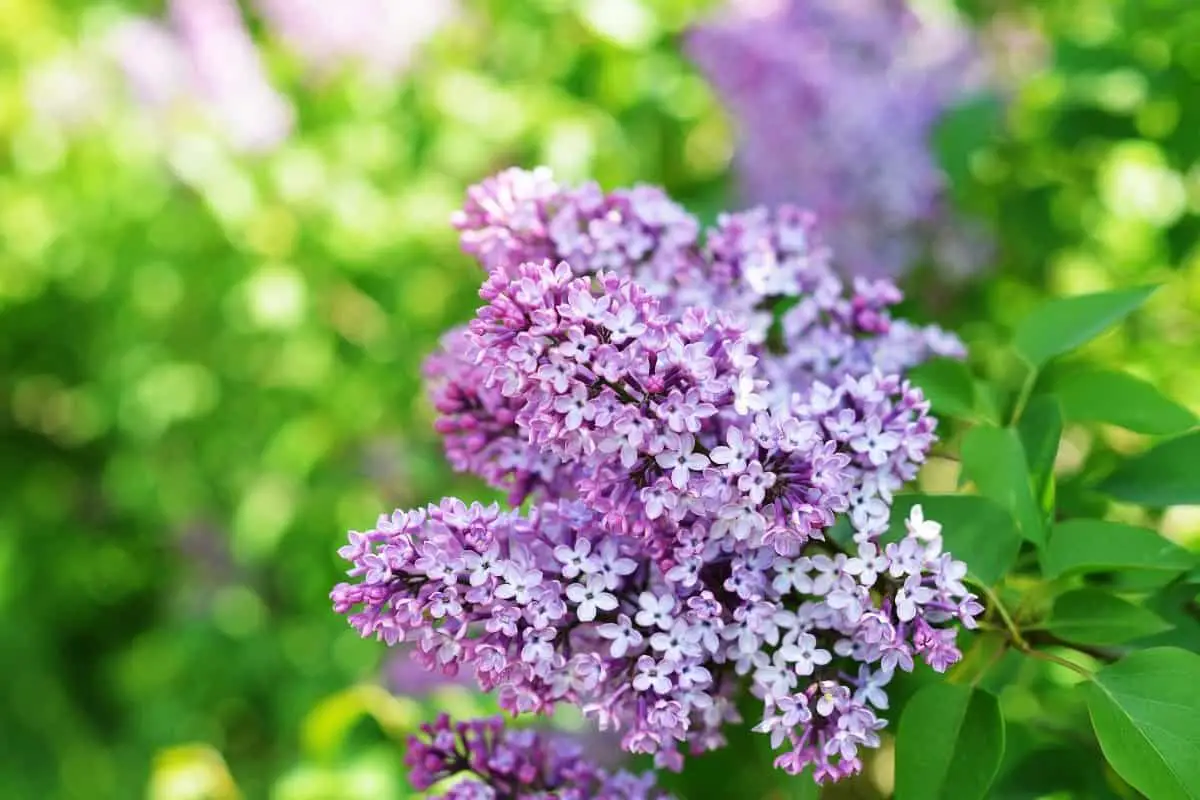Last Updated on June 30, 2021 by Cristina
The fragrance from the lilac flowers is refreshing and outstanding, but do you know when lilac bushes bloom or are you missing out on the flowers?
Growing a lilac shrub is an achievement. But if it doesn’t flower, it becomes a real problem. It doesn’t mean the gardener is doing something wrong; it could be some environmental effects.
Lilacs are easy-to-grow, hardy, and low-maintenance shrubs that grow best in northern states and areas with cool summers. However, some varieties are available for warmer regions as well.
The purple flowers are some of the common lilac blooms that come in late May. They attract butterflies, hummingbirds, and other pollinators. The cut flowers are perfect for bringing the fabulous scent of spring right into your home.
Lilac flowers love a little cold weather. The common ones thrive in northern states and colder climates, but a variety of the plants can be found in warmer areas. All lilac bushes do best in a location that gets full sun for about six to eight hours every day. They also like fertile, well-drained soil that has a neutral to slightly alkaline pH level.
The lilac tree can grow up to 5 to 15 feet tall. Once it establishes its roots, this plant is low maintenance. These plants are believed to be deer resistant and are prone to too many. You can propagate them through offshoot suckers, which springs out from the roots.
When Do Lilac Bushes Bloom?
Lilacs (syringa) bloom in spring. The large, beautiful wands of flowers bring about an abundant color to the landscape and fill the air with fragrance.
The biggest challenge with growing lilacs in the mild coastal areas is the warm winters. However, most lilac plants need the winter chill to flower well.
In mild areas, the low-chill varieties grow and bloom well. Lilacs thrive in U.S. Department of Agriculture plant hardiness zones 3 through 9, depending on the variety.

Factors Affecting Lilac Bushes Bloom
Several factors affect their bloom; they include
Age Of The Lilac Bush
The age of your lilac is a big deal as to how many times the bush will bloom. Young lilacs require more time to establish their roots. As a result, young trees less than 3 years old will not produce flowers. Some will take 4 -5 years to mature enough to display their blooms.
Most lilacs can only bloom for a short time period in the spring. However, common lilacs have some of the longest and hardiest blooms. Re-blooming lilacs are long-lasting lilac varieties that can bloom for 6 weeks through spring and summer.
Early Spring Lilacs
Lilacs do not bloom all at the same time. Some bloom early-spring while others late-spring. The earliest bloomers include the common lilac that blooms in May (spring), depending on how high the spring temperature rises.
Hybrid varieties also flower earlier than the common lilac and stretch out the spring bloom season by several weeks. The (Syringa x hyacinthiflora) or the hybrid hyacinth lilac is also an early bloomer. It can bloom up to 10 days earlier than the common lilac.
The Betsy Ross (Syringa x oblate) and early lilac (Syringa oblate) make a prompt appearance in spring.

Late Spring Lilacs
Common lilacs can also fall into this category. Since their blooms can last for a month, it means it will have to wait until late spring if it flowers late due to cold weather. Common lilacs develop buds for next year’s blooms right after they finish blooming. So keep an eye on your lilac when it comes to pruning your bush.
If you prune during summer, you will remove the buds and inhibit blooming in the following year. Do not clip faded blooms from a lilac shrub immediately after blooming or trim the bush to maintain its shape. You could accidentally remove the buds for the coming year’s blooms.
Miss Kim lilac (Syringa patula) is another late-spring option. It bursts with purple buds blooming into lavender and blue blossoms. The Sunday Chinese lilac (Syringa x chinesis) is also a late bloomer producing flowers well into the season.
Lilac Plant Maintenance After Flowering
After lilac flowers bloom and fade, it is important to take care of them in several ways. They include:
Cut the dead flower heads from the plant. Use a sharp pair of pruning shears. Remove the dead flower heads to help increase flowering in the coming season. Do it right after the flowers fade as a general pruning. Remove broken branches as well and thin the canopy as desired.
Miracle-Gro Shake ‘N Feed Flowering Trees and Shrubs Continuous Release Plant Food
Avoid heavy pruning as it can diminish flowering in the coming season. You can prune to reduce the height and width of this plant but do it with care. Avoid late pruning!
What To Do When Your Lilac Bush Fails To Bloom
Most gardeners try to look for a single reason why their bush is not blooming. Instead of thinking about only one reason, look for possible reasons that may include:
- Pruning late or at the wrong time.
- Planting lilacs in the wrong climate or area.
- Cold weather killing the buds.
- The shrub could be too young to bloom.
- It could also be too old.
Sometimes the reason why your lilac is not blooming is nobody’s fault, so do not beat yourself up.
The common lilac is a very cold-hardy plant. However, if a hard frost or a freeze sweeps across your garden when the flower buds are about to open, they can be killed. As a result, you will lose bloom for that year. Unfortunately, you cannot do anything to protect this; accept and appreciate the next year’s bloom.
Some gardeners may plant their lilac in the wrong place. For example, maybe the soil is not well-drained, or there is stagnant water. If you made a mistake in planting, you could transplant your plant to a suitable spot.
Conclusion
Now that you know when lilac bushes bloom, you can expect a colorful home starting in the spring. But, if you are a lover of lilacs, go ahead and plant both the early and late bloomers so you can get plenty of flowers all through spring and summer.
You no longer have to buy lilacs when you can grow your own starting now—all the best in your gardening journey.
Caroline is a gardener who loves to get down to the nitty–gritty of gardening. She proudly proclaims herself as a ‘dirt worshipper‘ and can often be found deep in the garden, covered in soil and singing to her plants. As a self–proclaimed ‘plant whisperer‘, Caroline believes that plants need love and attention just like any other living thing, and she loves to give them both. When she‘s not tending to her garden, you can often find her researching the latest gardening trends, or teaching others how to make their gardens thrive



